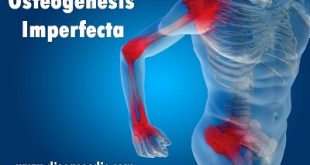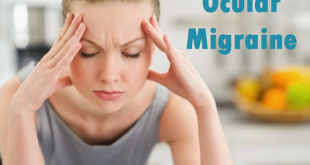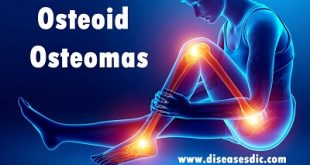Definition
Overactive bladder Syndrome is a health condition that causes a variety of symptoms, many of which can cause feelings of embarrassment. Dealing with these symptoms can sometimes cause you to want to isolate yourself or limit your social and work life activities to avoid feeling uncomfortable. The most common symptoms include:
- The sudden urge to urinate
- Inability to control urination (urge incontinence)
- Frequent urination
An overactive bladder also causes nocturia, when you’re woken up by the urge to urinate. A frequent urge to urinate not only leaves you running for the bathroom, but it can also be a true disruption to your everyday life.
Epidemiology
Earlier reports estimated that about one in six adults in the United States and Europe had OAB. The prevalence of OAB increases with age, thus it is expected that OAB will become more common in the future as the average age of people living in the developed world is increasing.
However, a recent Finnish population-based survey suggested that the prevalence had been largely overestimated due to methodological shortcomings regarding age distribution and low participation (in earlier reports). It is suspected, then, that OAB affects approximately half the number of individuals as earlier reported.
The American Urological Association reports studies showing rates as low as 7% to as high as 27% in men and rates as low as 9% to 43% in women. Urge incontinence was reported as higher in women. Older people are more likely to be affected, and the prevalence of symptoms increases with age.
Risk factors of Overactive Bladder Syndrome
- Older age
- Increased BMI/metabolic syndrome
- Diabetes
- Depression
- Neurological disorders
- Pregnancy
- Vaginal delivery
- Post-menopause
- Cystitis and chronic bladder
Causes
There are several factors that may cause Overactive Bladder Syndrome or may make it worse.
- Urinary tract infections may inflame and irritate the lining of the bladder, which can make it more sensitive and prone to being overactive.
- Caffeinated and carbonated drinks and some citrus and spicy foods may cause irritation of the bladder.
- Certain neurological conditions including Multiple Sclerosis may disrupt normal bladder function.
- Sometimes the bladder may fail to empty completely. If there is an obstruction or if there is a prolapse blocking the flow of urine, this can lead to an overactive bladder as there is not enough storage space available.
- Certain medications may disrupt bladder activity.
- Bladder abnormalities such as tumors or bladder stones.
- Sometimes there is no known cause for Overactive Bladder Syndrome.
Symptoms of Overactive Bladder Syndrome
The symptoms include:
The frequency of urination: A person will urinate more than eight times a day.
Nocturia: A person cannot sleep through the night without waking up to urinate, usually one to two times.
Urinary urgency: A person will experience a sudden and uncontrollable urge to urinate.
Urge incontinence: A person will leak urine when they experience the urge to urinate.
A person with an overactive bladder may often feel like they can’t completely empty their bladder. They may use the restroom and then feel like they need to go again a very short time after.
Complications
Any type of incontinence can affect your overall quality of life. If your overactive bladder symptoms cause a major disruption to your life, you might also have:
- Emotional distress or depression
- Anxiety
- Sleep disturbances and interrupted sleep cycles
- Issues with sexuality
Diagnosis and test
Medical History
Your health care provider will ask you a number of questions to understand your medical history. This should include information about the symptoms you are having, how long you have had them, and how they are changing your life.
Physical Exam
Your health care provider will examine you to look for something that may be causing your symptoms. In women, the physical exam will likely include your abdomen, the organs in your pelvis, and your rectum. In men, a physical exam will include your abdomen, prostate, and rectum.
Bladder Diary
You may be asked to keep a bladder diary, where you will note how often you go to the bathroom and any time you leak urine. This will help your health care provider learn more about your day-to-day symptoms.
Other Tests
Urine culture: Your health care provider may ask you to leave a sample of your urine to test for infection or blood.
Bladder scan: This type of ultrasound shows how much urine is still in the bladder after you go to the bathroom.
Cystoscopy: During this test, the doctor inserts a narrow tube with a tiny lens into the bladder. This can be used to rule out other causes of your symptoms.
Urodynamic testing: These tests check to see how well your lower urinary tract stores and releases urine.
Symptom Questionnaire: Many doctors use a written quiz to ask questions about your bladder problems and what causes you the most bother.
Treatment of Overactive Bladder Syndrome
Kegel or pelvic floor retraining exercises: These exercises teach you how to strengthen the muscles of the pelvic floor. By contracting the muscles that support the bladder, you strengthen and tighten the bladder outlet. These exercises need to be done on a regular basis and as discussed with your health professional in order for them to be successful.
Bladder training or bladder drill: By gradually increasing the time between each visit to the bathroom you may be able to train your bladder so that the urge to urinate does not occur as often. Your doctor will provide education on this technique and how to schedule your bathroom visits. While you are doing this, your doctor may ask you to reduce your fluid intake. Always discuss any change of fluid intake with your doctor.
Surgery: Those who don’t experience relief from OAB with medications or other treatments may benefit from surgery. Surgery may be aimed at reducing the nerve stimulation that causes the involuntary contractions of the bladder, increasing the size of the bladder, or creating a different pathway for urine to be drained.
Medications for OAB include
Antimuscarinic (antispasmodic) medications: These medications reduce the number of involuntary bladder contractions by preventing spasm of the detrusor muscle that causes them, and increase bladder capacity. In general, these medications can reduce leakage of urine caused by OAB by 60% to 75%. Examples of antimuscarinic medications include:
- Darifenacin
- Oxybutynin
- Solifenacin
- Tolterodine
- Trospium
The most common side effects of antimuscarinic medications are dry mouth, dry eyes, increased pressure inside the eye, and constipation. Be sure to tell your doctor about all of the medications you are taking and all of your medical conditions, as there are some people who should not take antimuscarinic medications. These side effects can be minimized by starting with a low dose of medication and gradually increasing the dose.
Prevention of Overactive Bladder Syndrome
OAB prevention and managing options include:
- Staying hydrated but not overhydrated
- losing weight
- treating chronic constipation through medication or diet
- pelvic floor muscle exercises, including Kegels
- treating urinary and bladder infections
- quitting smoking to reduce coughing
- regular exercise
Many foods and drinks worsen OAB symptoms. Making a few dietary changes will often reduce symptoms greatly.
Caffeine, alcohol, and salty foods can act as a diuretic, increasing urine output and trips to the bathroom.
 Diseases Treatments Dictionary This is complete solution to read all diseases treatments Which covers Prevention, Causes, Symptoms, Medical Terms, Drugs, Prescription, Natural Remedies with cures and Treatments. Most of the common diseases were listed in names, split with categories.
Diseases Treatments Dictionary This is complete solution to read all diseases treatments Which covers Prevention, Causes, Symptoms, Medical Terms, Drugs, Prescription, Natural Remedies with cures and Treatments. Most of the common diseases were listed in names, split with categories.







please tell something about uremia and transplantation of kidney
we will be updating soon about this.
Thanks for teaching
Alhamdulillah,this application is very useful i have lern a lot from it,may almighty Allah bless you amin.
Alhamdulillah, i have lern a lot from this useful application,may almighty Allah bless you amin.
how can 1 prevent the frequency of urine and urge urine
Bladder retraining.
Diet modification.
Monitoring fluid intake.
Kegel exercises.
am very appreciate this app is one of the best.
if it’s hardly to urinate what are the courses for it
Please consult a doctor.
This app is very useful I have learnt a lot, How much urine does a normal bladder of an adult carry
A healthy bladder can hold one and a half to two cups (300-400mls) of urine during the day and about four cups (800mls) at night.
Thanks for teaching, I’m the one who is suffering from this disease, l went to hospital several times but there is no change, what should l do my lyf is irritated, I urinate more than 12 times a day at night 3 times, please help me
Please take some natural treatment and consult a nephrologist.
after urination leakage usually seems.prescribed by urologist velatam plus
All of this advice is some of the best professional that I’ve heard on line and any good doctor would give. You are spot on.
Good luck to all that suffer from this ailment.
i am taking URIMAX D – at bed time for prostate grade 2, please suggest any addition.
please consult an oncologist.
it started yesterday when I started feeling like I’m having running stomach but I woke up this morning and I noticed my bladder just got issues. I’m not feeling good now. it seems like my bladder is full still after urinating.
?what are my gonna do?
Please consult a urologist.
I have an exactly similar problem for about ten years now it has even affected my sexual activity, it even makes me nervous and also affects my concentration, I have tried to explain my problem to the hospital, left urine samples but results haven’t shown my problem now I don’t what to do as it is becoming worse especially in bed with my wife.
my problem is that if i finished urinating and I put on my trousers some of the urine will be coming out again, no matter how long i have to be. I your consultation please!! tanks so much
It might be due to loss of muscle control in the bladder. Please consult a urologist.
so what’s the treatment for this symptoms?
Kegel or pelvic floor retraining exercises
Bladder training or bladder drill
Surgery
how can bladder stone be treated.Are there some thing to avoid as not to increase the size of the stone
Make sure your diet plan is with no calcium foods. This prevents you from recurring or increasing stones and parallelly you should take the prescribed medicines.